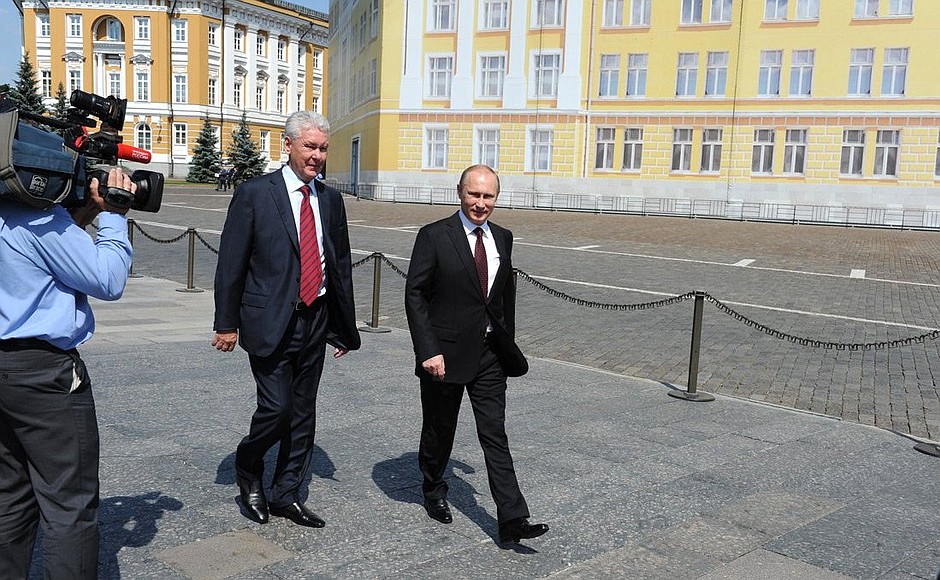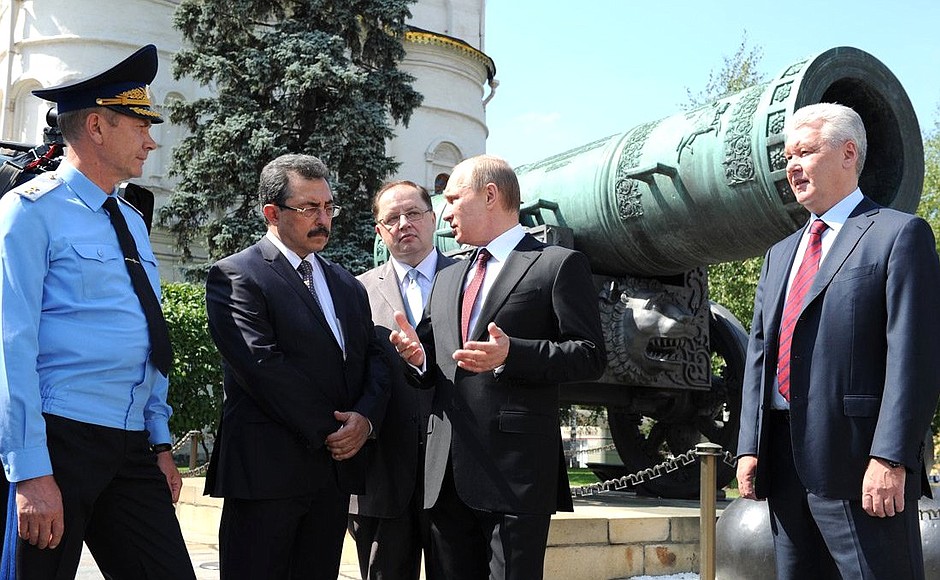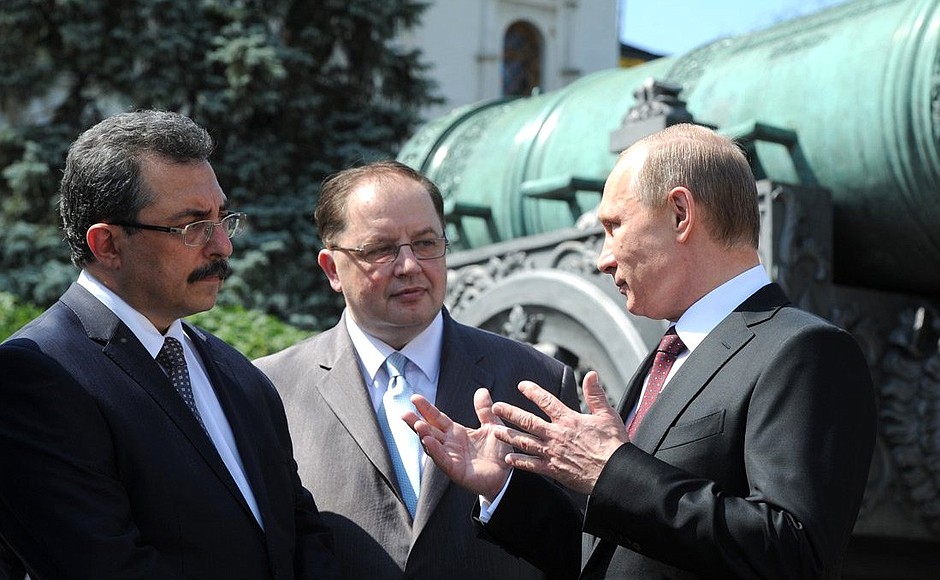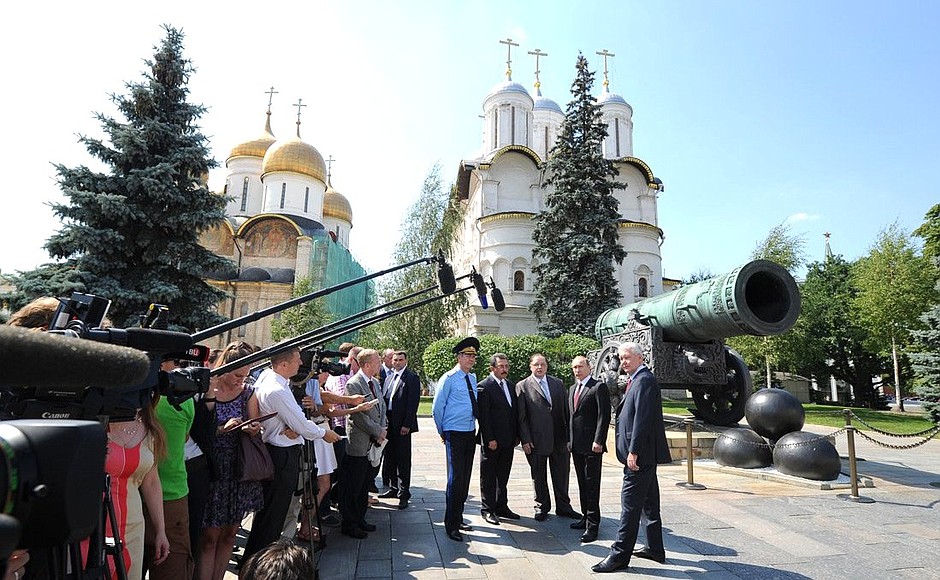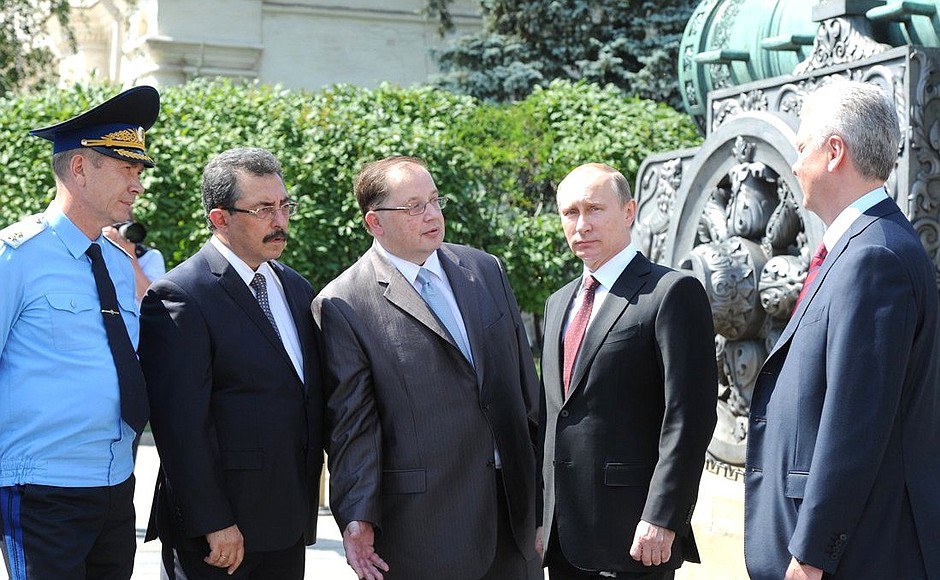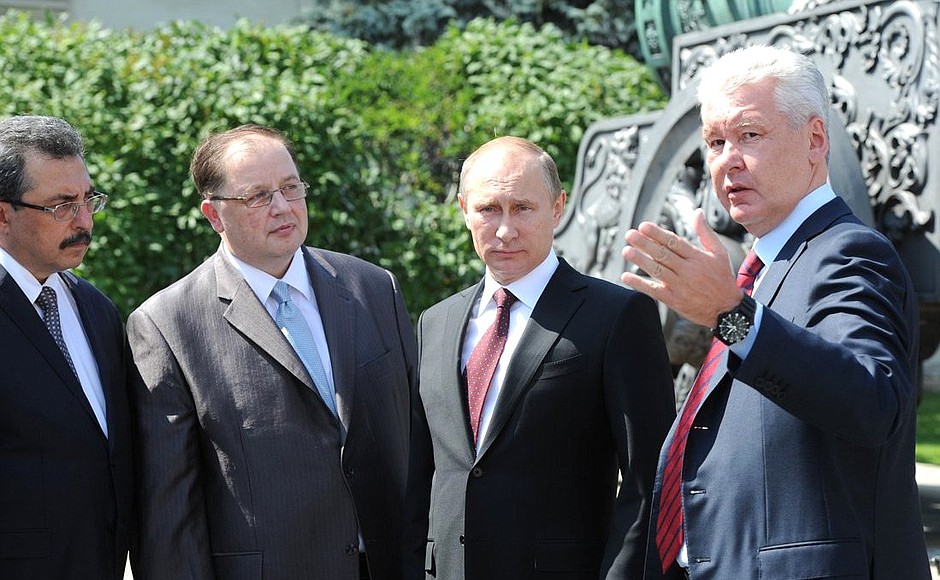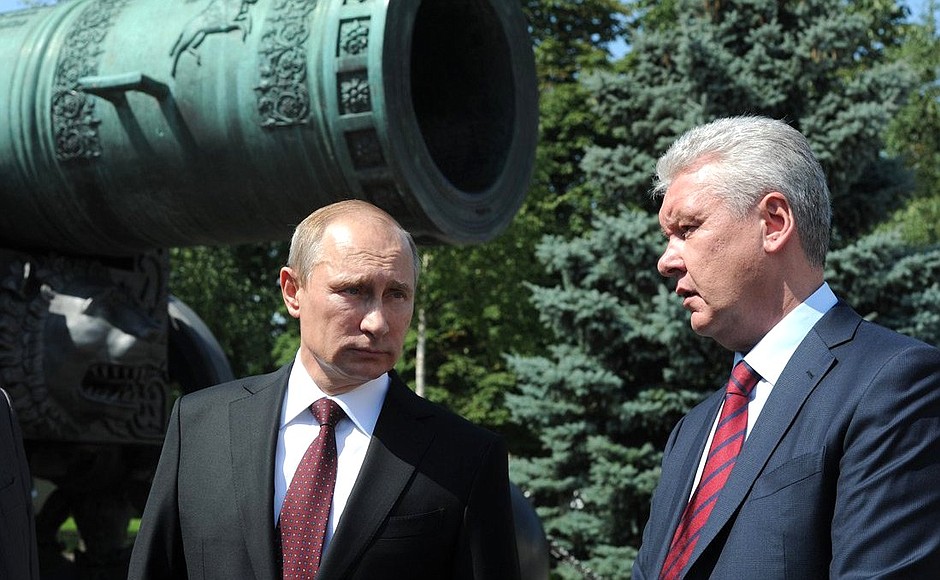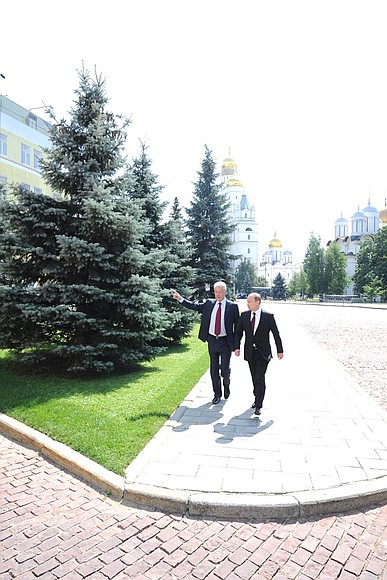President of Russia Vladimir Putin: I asked you to come here today to discuss this historic site at the Kremlin.
As you know, the building that occupies this site [Building 14] was built in the 1930s, but previously there were two cloisters and a church here. The reconstruction began in 2001. Serious work began in 2007, and the buildings have been practically demolished now. It housed part of the Presidential Executive Office. They have moved to offices on Staraya Ploshchad and have quite comfortable working conditions there. In these neighbourhoods immediately surrounding the Kremlin there is quite enough space to arrange good working conditions for everyone close by the presidential residence.
That is how the idea came up of rather than restoring the 1930s building, returning the site to its historical appearance instead, with the two cloisters and the church. In today’s situation of course, they would be restored as cultural heritage monuments only.
Naturally, we would need to discuss this idea with the public, the people of Moscow, the architects’ community, and we would also need to get UNESCO’s approval, because the Kremlin is under UNESCO protection. We would need to examine everything very thoroughly, so as go about this work calmly, without fuss and haste, if we do decide that this is a project that should go ahead.
Deputy Director of the Moscow Kremlin Museums andrei Batalov: As you know, two cloisters stood on this site. The Ascension Monastery was founded by Grand Duchess Eudoxia, the wife of Dmitry Donskoy, in the late 14th century, and housed the tombs of princes and princesses. The Chudov [Miracle] Monastery, which stood slightly closer to where we are, was founded by Metropolitan Alexii. This site was where the khan had his palace. When the khan’s wife, Taidula, fell ill and was losing her sight, Metropolitan Alexii was invited to heal her. His faith was so strong that he did indeed cure her sickness. She gave him the palace site and it was there that he founded the Chudov Monastery.
These two Moscow monasteries, among the city’s oldest, stood on this site until 1929. Their buildings came quite a lot closer than does Building 14. The Chudov Monastery occupied practically the whole square. This site was also the location of the Maly Nikolayevsky Palace, which was famous for being the place where Nicholas I had the famous meeting with Pushkin at which he said, “I will be your personal censor.”
Those buildings were all still standing in 1929. Despite the public resistance, which was strong, and the opposition by architects and artists, the buildings were demolished to make way for Building 14. It was built in 1929, essentially because they needed a site to house the All-Union Central Executive Committee Military School’s students, who guarded the Kremlin and its buildings. The early correspondence contains perfectly frank texts explaining why all of this was necessary. The building was opened in 1932.
It has undergone several reconstructions since then. The first was in 1952, when it was turned into the Kremlin Theatre, then in 1968, and the latest was in 1981–1983.
Rector of Moscow Architectural Institute Dmitry Shvidkovsky: Mr President, to be honest, I can say as an architect that the building does not have any real value in itself. It was built by a good architect, Ivan Rerberg, who, as you maybe know, built the Central Telegraph building and Kievsky Railway Station. But this building is one of his weakest works and, regrettably, is not really suitable for the Kremlin. It would therefore be no great loss.
Vladimir Putin: I want to say right away that I am not insisting on anything. This is an idea, a suggestion. And if, I repeat again, the architecture community and the public feel this is desirable, then I will give instructions to the Property Management Directorate and the Finance Ministry to develop this idea calmly, on a routine basis.
Dmitry Shvidkovsky: I would very much like to see it developed because this building is like a thorn in the flesh.
Mayor of Moscow Sergei Sobyanin: You should have started by saying that. (Laughter.)
Dmitry Shvidkovsky: A solution can be found. But we need to think.
Vladimir Putin: Very well. Let’s do that then. Mr Sobyanin had another idea; given that there is a large flow of tourists here, we could open the gates of the Spasskaya Tower, so tourists could enter there.
Sergei Sobyanin: That would be very good, because the tourists enter the Kremlin from the Kutafya Tower. As they arrive here, they end up at the Spasskaya Tower, turn around to go to the Red Square, walk through the whole of the Kremlin territory, and this, of course, is difficult logistically. If there is an exit directly through to the Red Square through the Spasskaya Tower, then this would be more convenient for residents and tourists.
Vladimir Putin: Let’s do that then. But before we start implementing the idea, the plan itself, we could put a park here.
Dmitry Shvidkovsky: Yes, although it would be nice if it is not too eye-catching.
Vladimir Putin: Well, we can do that in contact and dialogue with you as well.
Andrei Batalov: But first, we must discuss everything.
Vladimir Putin: Of course. I know how sensitive all of this is. I do not want to mess with you. (Laughter.)
Andrei Batalov: Especially since UNESCO hates changes to groups of structures.
Dmitry Shvidkovsky: We are prepared to conduct a student competition at our architectural institute – for example, for the park.
Vladimir Putin: Yes, please. We will do all this without any volunteerism, in contact with experts.
Sergei Sobyanin: If we then restore monasteries and cathedrals here, then we should certainly have a park or a square here that takes into account the future work, so as not to remove and rebuild it twice.
Andrei Batalov: We need to take into account the fact that in that case, this square will not be here as we currently see it.
Vladimir Putin: Our cultural workers often complain that we give a lot to the Church. There is a major discussion on this. These sites could be done – I repeat – we could rebuild them in the first phase exclusively as cultural heritage monuments.
Andrei Batalov: We will need to make more of an effort. Because I worked on the history of these monasteries back in the Soviet times so I know that there are fairly few materials for their restoration.
Vladimir Putin: Yes, I looked at the photographs. I hope that the experts will be able to figure things out.
Sergei Sobyanin: Incidentally, here we can conduct extra archaeological studies. Perhaps we will see the foundations of the churches as well as the later historical layers.
Vladimir Putin: Yes, we will need to deal with it thoroughly and carefully.
Andrei Batalov: Maybe we will find the foundation of the Maly Nikolayevsky Palace.
Dmitry Shvidkovsky: And the Church of St Catherine here by Rossi was very good.
Andrei Batalov: And the new cathedral of the Chudov Monastery was kept out of the development.
Vladimir Putin: Very well. Then let’s try to get this work started.
Thank you very much.
